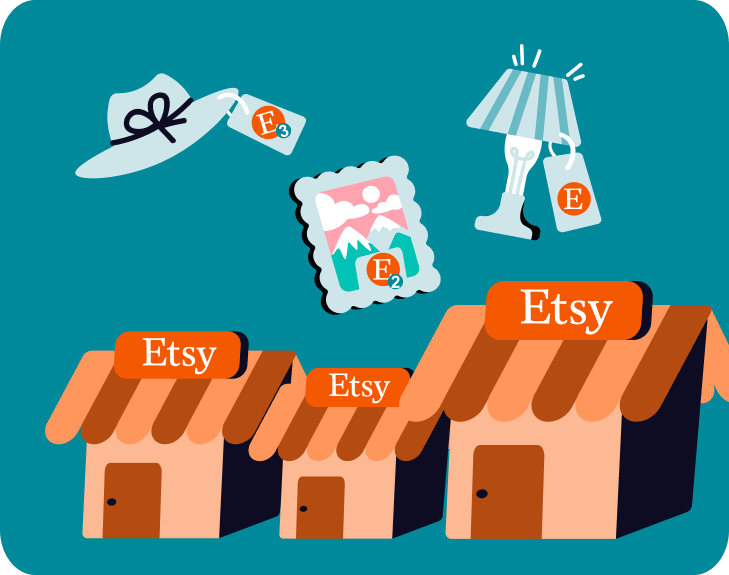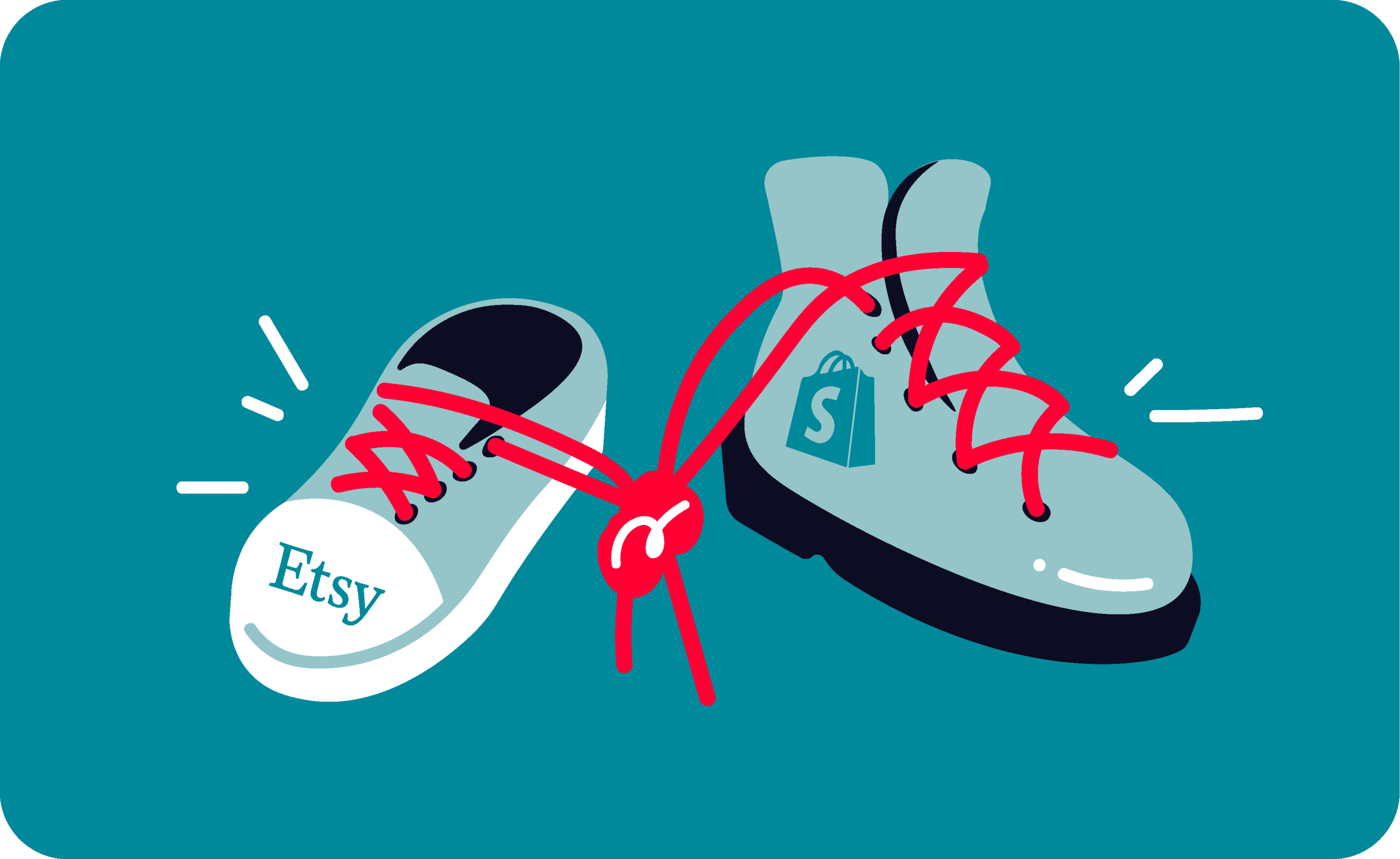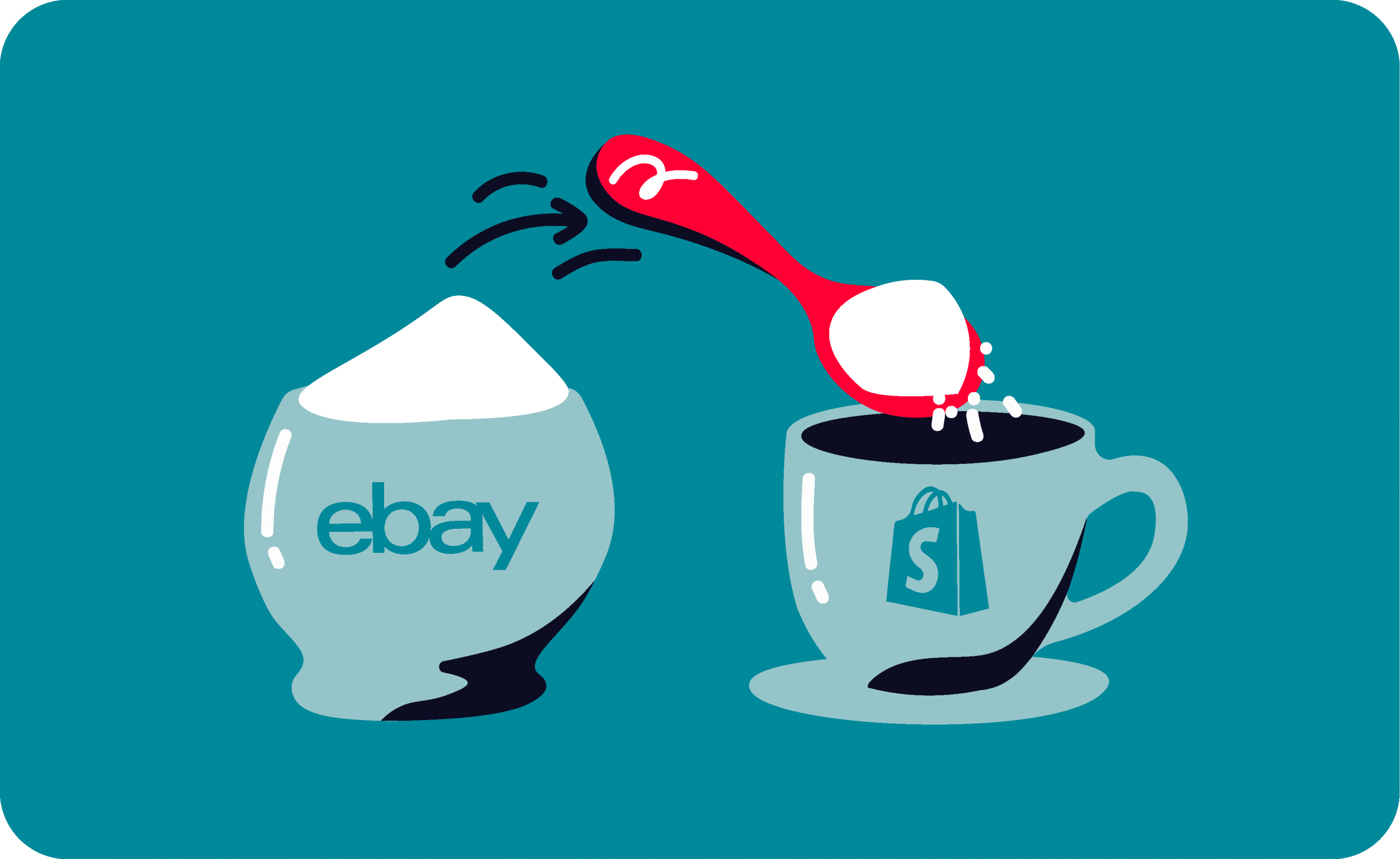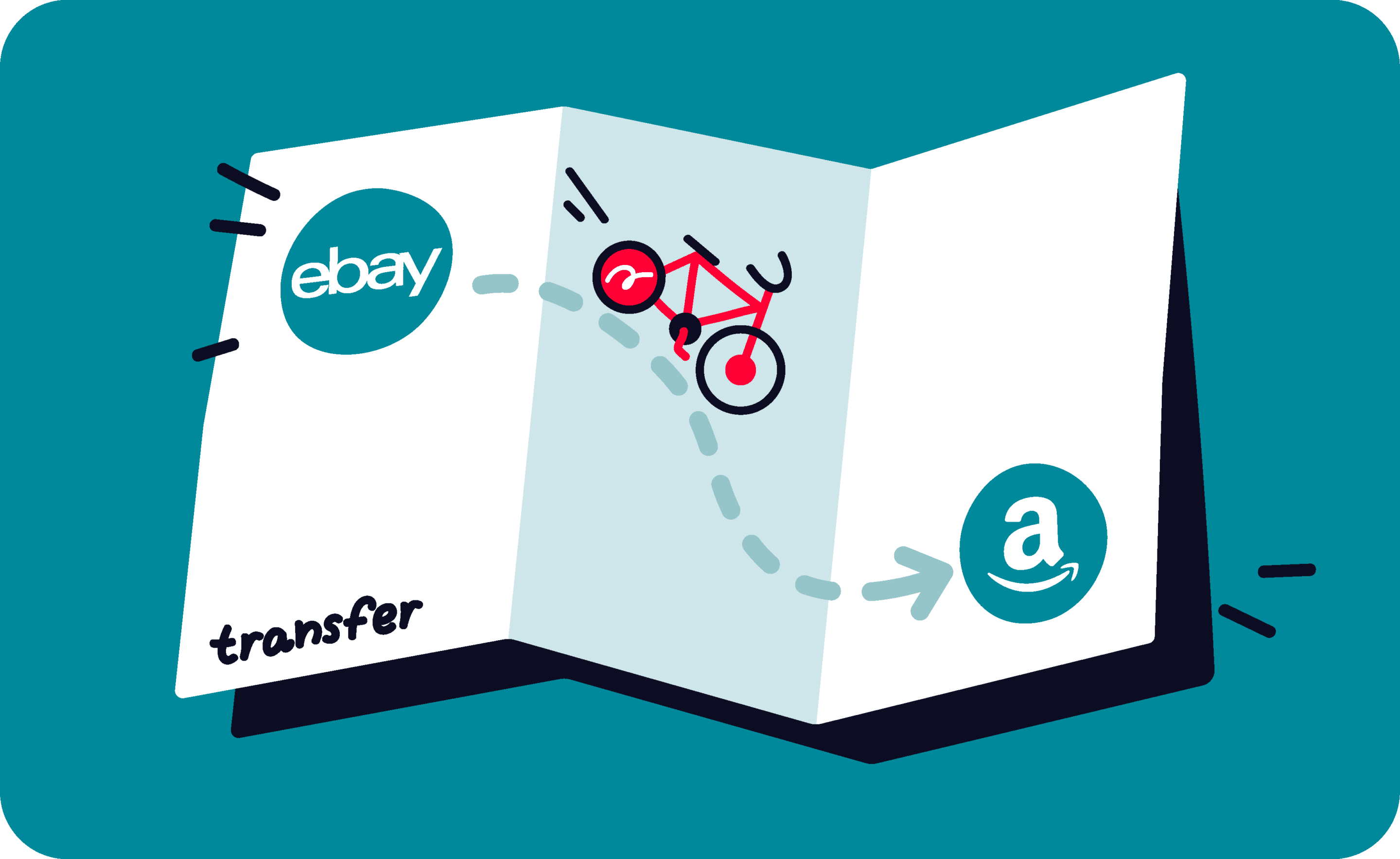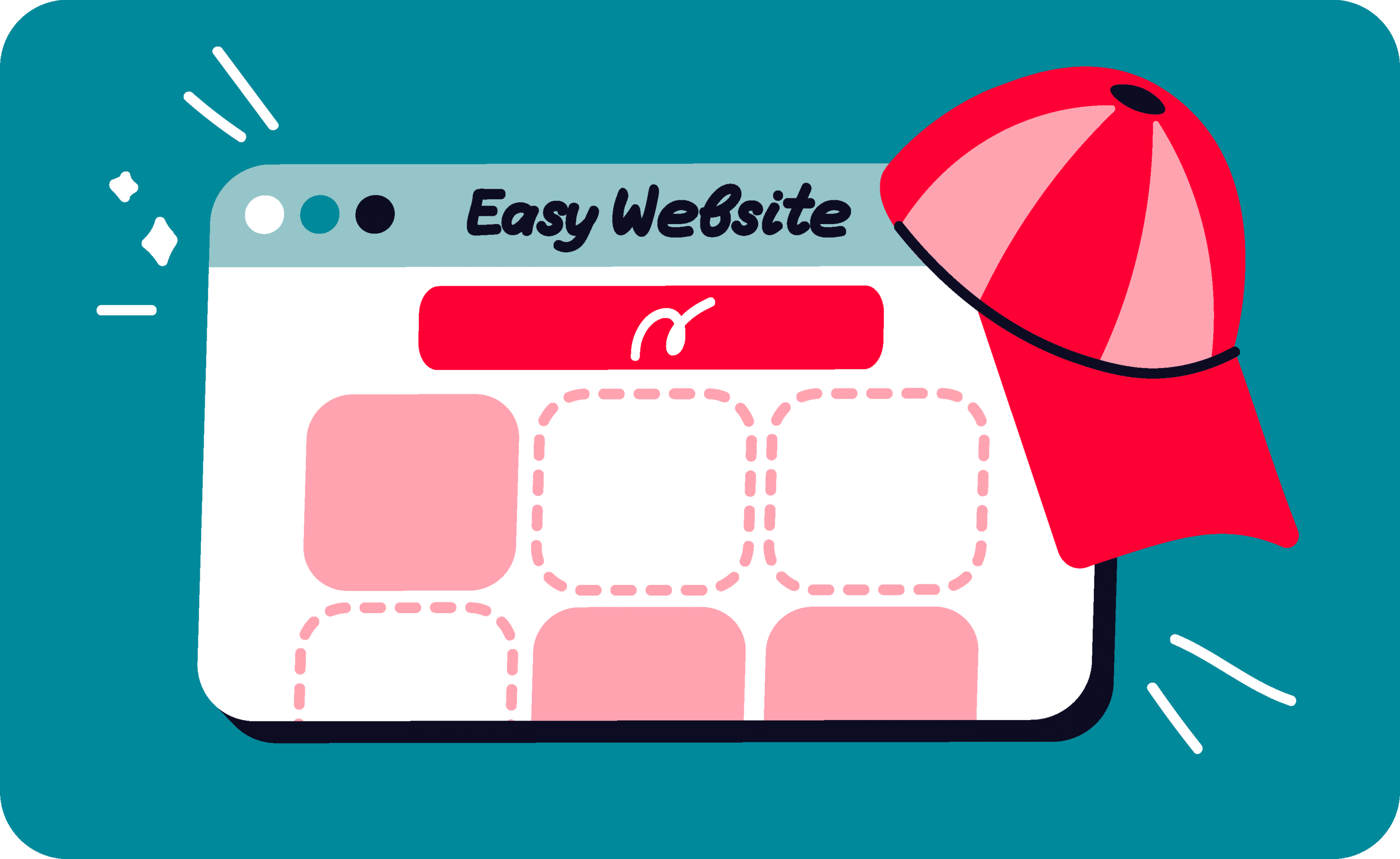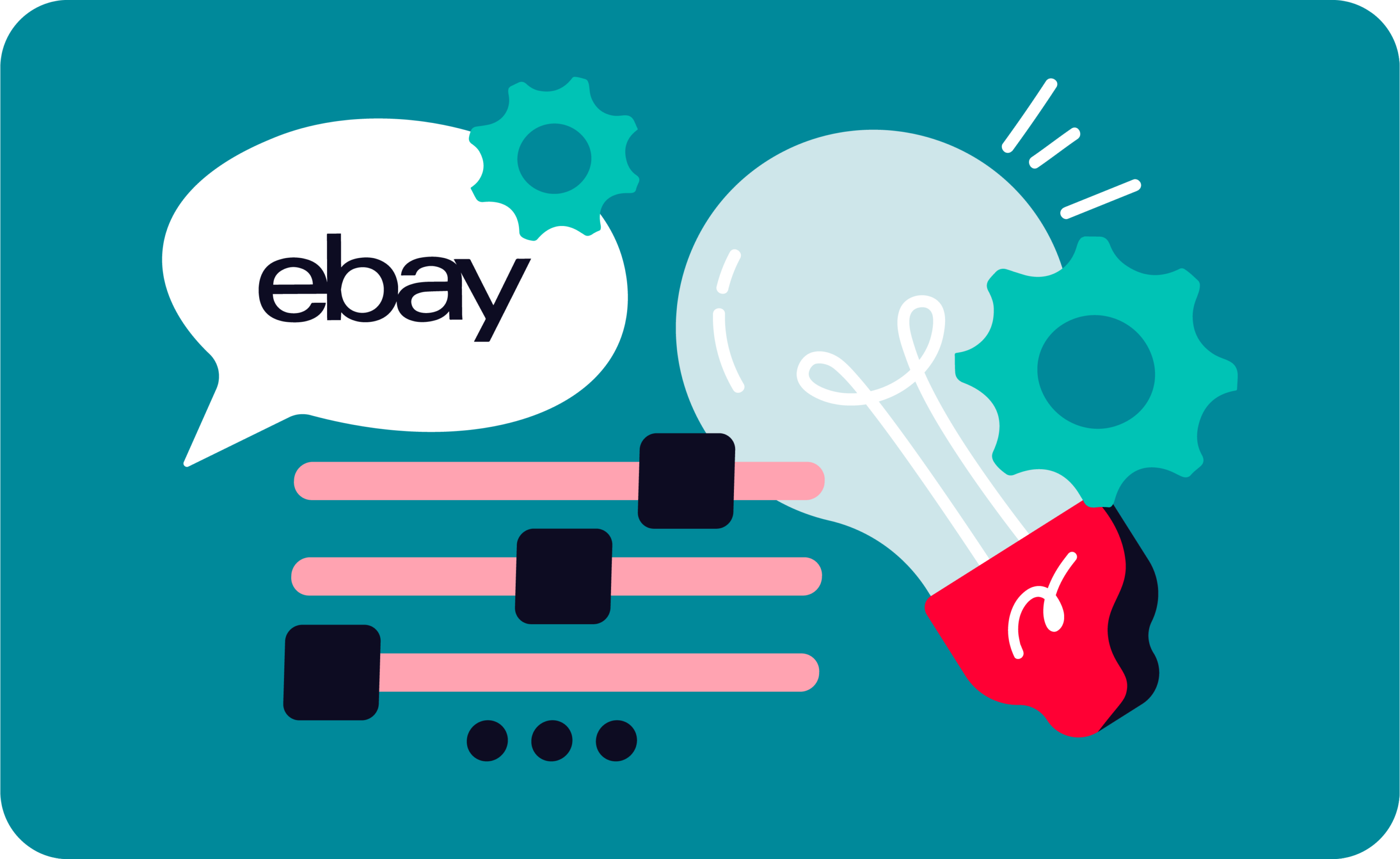Last update April 14, 2023
Overview
As you may already know, Amazon and Shopify are 2 of the main players in the e-commerce business. Millions of sellers from all around the globe have chosen to use Amazon, especially considering the number of potential customers interested in searching and buying products on this channel.
Indeed the reliability of Amazon has led it to become one of the more trusted companies in the e-commerce world. Nevertheless, running a business on a marketplace might be expensive and, in the long-term, might hinder your business from scaling up because of the stiff competition amongst the sellers. Furthermore, selling on a marketplace gives you limited opportunities to make your brand recognizable.
For this reason, many sellers, driven by the hunger for greater independence and opportunity, have started their own branded store on e-commerce platforms, such as Shopify.
So, if you’re still wavering whether to use Amazon or Shopify, read this guide to understand how to take the best from both by using them centrally.
After a quick comparison, we will teach you how to integrate Amazon with Shopify, cross-list or sync listing, sync inventory, and export orders.
Nembol allows you to migrate listings and sync inventory across eBay and Shopify. This applies as well to:
Selling on Shopify vs Amazon
Let’s start by spotting Shopify and Amazon pros and cons to grasp how to take the best from those channels.
Shopify: pros and cons of your personal website
The pros of having Shopify as your business e-commerce platform could be summarized in 5 points:
- Shopify, without a doubt, is one of the most user-friendly e-commerce platforms on the web! It is the right fit for users who are new to eCommerce and have never programmed before. Indeed, it takes only few steps steps to launch a Shopify store from scratch.
- Shopify, like other e-commerce platforms, allows you to sell your goods on your own, personal space, without having to compete in pricing with thousands of other sellers. Owning a website will also help you foster your brand awareness and reputation.
- From the seller-side, Shopify is user-friendly: the dashboard is well-organized and intuitive, and if you struggle using some functions, there are plenty of guides, videos, and articles to consult.
- You can also get access to a set of built-in tools and, if you need more specific functions or features, you can look for one of the thousands of third-party apps hosted in the Shopify app store. You can find solutions to automate dropshipping, improve your marketing strategy, and more.
The disadvantages related to the use of Shopify are basically two and are mostly related to the appeal that your store should be able to exert in order to attract potential customers.
- Personalization is Shopify’s main flaw, especially compared to on-premise platforms, such as WooCommerce or Prestashop, which allows a higher degree of customization for those who know the programming language.
- Although having an online store you will get you a significant degree of independence, eCommerce requires managing all aspects of your website, from marketing acquisition strategy to technical support, and it has important implications:
- You need to take care of your clients, supporting and assisting them to win their trust.
- You are in charge of troubleshooting common website and domain issues.
- You need to find ways of driving customers to your website, using SEO and running Ad campaigns on Facebook and Google.
To overcome the latter implication, many online sellers have chosen to start selling multichannel, taking advantage of the popularity of marketplaces to attract traffic and potential buyers to their own website.
Pros and cons of selling on Amazon
Amazon is the world’s largest and most well-know digital marketplace on the planet. Indeed, Amazon has reshaped the world of online retailing, leveraging on three pillars:
- Service reliability, which has led Amazon to become one of the favorite customers’ marketplace for purchasing, especially considering the excellent customer support and the favorable return policy.
- Safety and the general feeling of customer protection.
- Speed of delivery, which made physical shopping relatively much more time-consuming.
Thanks to these three strongpoints, Amazon has become the main online marketplace as well as a springboard for many businesses.
Indeed, Amazon has also facilitated sellers in finding their consumer niche: sellers don’t need to run market research to identify their audience and potential customers, considering that Amazon has its built-in search engine, which responds to the consumers’ needs (on the basis of their quieries).
In other words, it’s the customer that comes to you, and not vice-versa.
Selling on Amazon is compelling, but even this impressive marketplace has its flaws:
- Amazon is a super competitive platform: standing out from the crowd and letting your products rank up in the search results is a tough task. To stay ahead of the Amazon seller competition and be rewarded by the algorithm by getting placed among the first few pages of results, you may need to lower your product prices or run expensive advertising campaigns.
- Amazon Referral costs are quite expensive: The referral cost is a fee that Amazon charges you when customers buy your products. It applies a variable percentage to the total cost of the sold items. The referral cost is between 8% and 15% and depends on the product category. The charge occurs even if a sold product is returned by a customer.
- Amazon’s reliability also weights on the sellers’ shoulders: Amazon requires its merchants to maintain their profiles updated and promptly reply to consumer messages. Indeed, Amazon has high service quality standards, and if you want to build up your business and become more competitive, you must meet Amazon’s requirements.
Don’t miss out on the latest updates, exclusive content, and special offers! Subscribe to our newsletter.
By entering your email address, you accept our Privacy Policy and Terms of Use. Totally free. Unsubscribe at any time.
Shopify and Amazon: why should you sell on both
Multichannel online selling increases your sales
As you can assume from the above list of pros and cons, Amazon allows merchants to find a broad client base and quickly reach their target audience. But the stiff competition and increasing cost might erode your earnings.
On the other hand, eCommerce platforms, such as Shopify, may help you increase brand recognition and save money, eliminating the need to race to lower prices, but have no built-in audience to whom sell products.
The complementarity of these two channels, however, makes it possible to glimpse an excellent opportunity: start a multichannel business, taking the best from both those two selling platforms.
Use Amazon to reach people and generate interest in your offer, and then drive that traffic to your Shopify store. This helps you move beyond the dynamics of the marketplace, finally building a business that is suited to you.
Running a multichannel business might become really profitable, especially considering that you can double the sales, and reach customers from all around the world. Pretty cool, isn’t it?
Selling on Amazon AND Shopify made easy
Though, don’t forget that managing two channels means twice the responsibilities.
You will need to organize your business routine according to two different channels, which have different rules and requirements, and you’ll have to manage one of the most difficult tasks: keeping them aligned.
The largest risk when running a multichannel business is that your stores go out of hand and you find yourself in a hairy situation where your inventory is totally messed up. This could result in overselling or underselling, waste of time and many sleepless nights trying to align everything manually.
Luckily, you might find the help you need using a third-party app to double your profits without doubling the effort. Nembol is such an app that helps you:
- Integrate multiple channels, including marketplaces, e-commerce and social platforms.
- Cross-list on Amazon, and from Amazon.
- Keep your inventory synced, automatically.
- Bulk edit listing details, inventory, and prices.
How to import products from Amazon to Shopify
Publishing your Amazon listings on Shopify manually can quickly turn into a time-consuming activity, especially if you have a broad range of products to migrate. Nembol has been designed to accomplish a twofold mission:
- Ease multi-channel business, providing sellers with features and tools useful to save time and better handle different channel requirements.
- Help sellers manage product quantities of the available stock, offering automatic sync automation to keep the inventory aligned on multiple channels.
How to connect Amazon with Shopify
Let’s see how easy would it be using Nembol to sync and connect Amazon to Shopify:
- Open the Channels Tab in Nembol
- Click on the “Login” button next to the Shopify icon.
- Grant access to Nembol as a third-party app.
- Repeat the same steps to connect Amazon.
Further info about setting up your accounts can be found here:
Read more on how to Set-up Amazon
Read more on how to Set-up Shopify
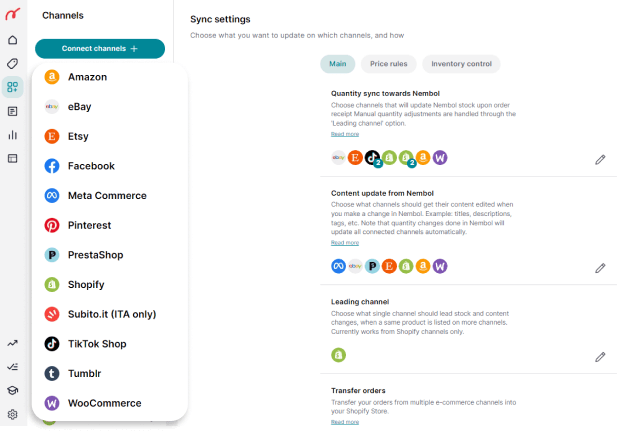

Bulk-list Amazon products on Shopify
Now that your channels have been connected, you can choose which settings and features to use before running your first product import.
Let’s say you want to push your Amazon listings to Shopify:
- Click on the button “Get products” and run your first import from Amazon.
- Wait a couple of minutes (depening on how many listings you have), and in the meanwhile, all your products will be imported into the Product tab.
- Once the import is complete, select your products (up to 500 at the time).
- Click on the Publish button (top-right corner).
- Nembol will create copies of your listings in your Shopify store.

Don’t miss out on the latest updates, exclusive content, and special offers! Subscribe to our newsletter.
By entering your email address, you accept our Privacy Policy and Terms of Use. Totally free. Unsubscribe at any time.
Amazon-Shopify inventory sync
As we told you before, the most difficult task when managing together a Shopify store and an Amazon store is to keep your product quantities aligned all the time. Oversights and overselling could lead to unhappy customers and jeopardize your seller rating.
These unpleasant situations could become more and more frequent if you don’t equip yourself with an Amazon and Shopify inventory management app that can check and control your multi-channel inventory.
To meet multichannel sellers’ needs, and help them avoid those kinds of problems, Nembol has designed a real-time automated inventory sync function.
- This function automatically aligns your inventory across all of your channels, every time you sell something in any of them.
- You can also centrally restock your items, just once for every version of your listings.
Transfer Amazon orders to Shopify
With Nembol, you can transfer your Amazon orders into Shopify. To use this function, all you need to do is:
- Access Nembol Channel tab.
- Click on Sync settings.
- Enable the “Quantity sync towards Nembol” function from Amazon.
- Enable the “Transfer order” function for Shopify.
To read more about this function visit: import orders into Shopify.


